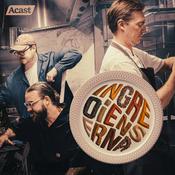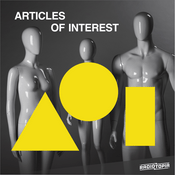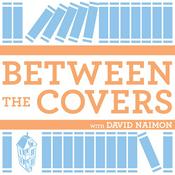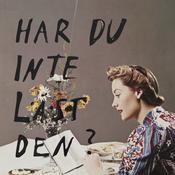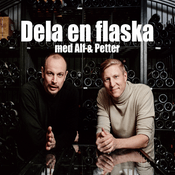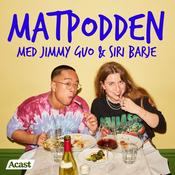Tillgängliga avsnitt
5 resultat 111
- Sir Gawain and the Green Knight Fitt 1 with Dr. Justin JacksonToday on Ascend: The Great Books Podcast, we are discussing Fitt 1 of Sir Gawain and the Green Knight with Dcn. Garlick, Dr. Justin Jackson of Hillsdale College, Chivalry Guild, and Banished Kent.Check out thegreatbookspodcast.com for our reading schedule.Check out our WRITTEN GUIDE to Sir Gawain and the Greek Knight (posted soon!).Episode SummaryThe panel dives into the 14th-century Middle English masterpiece Sir Gawain and the Green Knight, exploring its mysterious single-manuscript survival, alliterative brilliance, and rich layers of meaning in Fit 1. From the Troy-to-Britain prologue to the shocking arrival of the Green Knight and the beheading game, the discussion uncovers dualities, temptations, and the clash between chivalric courtesy and Christian virtue that make this Christmas tale profoundly relevant.Why Sir Gawain and the Green Knight Is Worth ReadingThis poem stands as one of the greatest works of English literature because it masterfully blends adventure, humor, moral depth, and spiritual insight. As Dr. Jackson notes, it survived by miracle in a single tiny manuscript, yet offers the “greatest chivalric romance” alongside exquisite theological literacy. It probes timeless questions—how do pride, fear, courtesy, and faith collide in a fallen world?—without easy answers, forcing readers to wrestle with their own choices. Tolkien saw it as a meditation on seductive worldly culture versus Christian ethos; the guests highlight its realistic portrayal of human imperfection amid high ideals. Beautifully crafted (alliteration, bob-and-wheel, vivid imagery), often funny, and profoundly Christian, it humanizes the heroic while elevating humility and grace—perfect for Christmas reflection on mortality, temptation, and redemption.Key Discussion PointsManuscript & Poet: A unique survival with Pearl, Cleanness, and Patience; anonymous poet of astounding skill in alliterative revival.Historical Frame: Begins with Troy’s fall and Aeneas (traitor in medieval legend) leading to Brutus and Britain—history as “bliss and blunder.”Arthur’s Court: Young, vital Arthur is admirable yet “somewhat childish,” craving marvels or “life for life” combat.Guinevere’s Gray Eyes: Symbol of wisdom/clarity, yet ambiguous; benchmark of beauty later challenged.Green Knight’s Duality: Terrifying green giant vs. courtly noble—tempting fear/violence vs. courtesy/mercy.The Game: Explicitly “stroke for stroke,” not beheading; court’s violent interpretation reveals failures.Tolkien’s Lens: Tension between seductive chivalric/courtly culture and higher Christian virtue.Gawain’s Intervention: Praised as humble, loyal self-sacrifice to shield Arthur.Notable QuotesDr. Jackson: “The poem is giving you two readings throughout, and then it wants to see which one are you going to appropriate.”Deacon Garlick: “This text captures my imagination… knowledge is an antecedent to love.”George (via Tolkien): “Gawain… as a matter of duty and humility and self-sacrifice.”Resources & RecommendationsTolkien’s translation and scholarly editionJames Winny’s facing-page translationDr. Jackson’s Hillsdale online course lecture (watch after finishing the poem to avoid spoilers)Next episode: Fits 2–3 with Dr. Tiffany Schubert. Join the discussion on Patreon or X!--------1:54:53
- Plato and Education: The Teacher as a Lover of the SoulToday on Ascend, we discuss Plato, education, the role of the teacher, eros, beauty, and much more drawing from the dialogues First Alcibiades and the Meno. Returning to the podcast, we have Dcn. Garlick, Dr. Frank Grabowski, Dr. Brett Larson, and Thomas Lackey.Visit thegreatbookspodcast.com for our reading schedule.Visit our LIBRARY OF WRITTEN GUIDES to help you read the great books. What does it mean to teach like Plato? In this rich, wide-ranging conversation the panel explores lessons on education drawn from Plato’s First Alcibiades and Meno. The central idea: the true teacher is not an information-dispenser or job-trainer, but a lover of the soul who serves as a living mirror in which the student comes to “know himself” and is drawn toward virtue, happiness, and ultimate beauty.Summary:The conversation revolved around a single, radiant idea: for Plato, the true teacher is not a dispenser of information or a trainer for the marketplace, but a lover of the soul. In First Alcibiades, Socrates positions himself as the living mirror in which the young, ambitious Alcibiades can finally see himself clearly and be drawn toward genuine happiness through virtue. Education is therefore deeply personal, erotic (in the classical sense of an ardent desire for not only pleasure but also nobility and wisdom), and irreducibly communal; self-knowledge is never solitary navel-gazing but requires another soul whose loving gaze reflects one’s own. The panel repeatedly contrasted this rich, teleological vision—where education aims at universal happiness, orders the whole person toward truth, goodness, and beauty, and ultimately points to God as the final mirror—with the thin, “unerotic” reality of modern schooling, which often reduces teachers to talking search engines and students to economic cogs in a materialist machine.A second major thread was the haunting, unresolved tension of the Meno: teaching demands both an able and willing teacher and an able and willing student. Virtue can be cultivated, but it cannot be forcibly downloaded; the student must respond, cooperate, and allow his desires to be re-ordered toward what is truly lovable. This led to broader reflections on beauty, rhetoric, place, and hierarchy: truth is beautiful and therefore insists on being loved; philosophy without rhetoric is impotent, rhetoric without philosophy becomes tyrannical; ugly buildings and disembodied logic deform the soul; natural hierarchy is not abolished by grace but perfected and placed in service of the common good. Throughout, the panel returned to the conviction that genuine education is slow, embodied, relational, and oriented toward the transcendent—an ascent that begins with a teacher who truly sees and loves the soul before him.Key words: Plato, First Alcibiades, Meno, classical education, teacher as lover of the soul, know thyself, virtue, happiness, eudaimonia, beauty, transcendentals, eros, mirror of the soul, rhetoric, philosophy, modern education critique, materialism, teleology, Socratic method, student-teacher relationship, hierarchy, imago Dei, Christian Platonism, and Great Books.This conversation was recorded April 2025.--------2:01:26
- Grace and the Grotesque: The Lame Shall Enter First by Flannery O'Connor with Dr. Brian KempleIn this episode of Ascend, Deacon Harrison Garlick and Dr. Brian Kemple discuss the violent, grotesque southern tale "The Lame Shall Enter First" by Flannery O'Connor.Visit thegreatbookspodcast.com for our reading schedule!Check out our LIBRARY of written guides to the great books.Check out the Lyceum Institute.They explore O'Connor's life, her unique Southern Gothic style, and the themes of faith, suffering, and the grotesque in her writing. The conversation also touches on the mission of the Lyceum Institute, the significance of characters and their arcs, and the pedagogical purpose of violence in literature. Through their analysis, they highlight the complexities of human relationships and the contrasting desires of the characters, ultimately revealing the deeper truths embedded in O'Connor's work. Through a detailed analysis of specific scenes and character dynamics, the discussion highlights the grotesque elements in O'Connor's storytelling and the moral implications of her narratives, ultimately reflecting on the nature of redemption and the human experience."She doesn't intend to tidy up reality." - Dr. Kemple--------2:21:14
- Law of Nature: Part Three of Plato's Gorgias with Dr. Gregory McBrayerIn the incredible final act of Plato’s Gorgias (481–527), Dcn. Harrison Garlick and Dr. Greg McBrayer (Ashland University, New Thinkery podcast) tackle the longest and most brutal confrontation: Socrates versus Callicles, the most shameless, most ambitious, and—as Greg insists—nastiest character in all of Plato. Visit thegreatbookspodcast.com for our read schedule!Check out our COLLECTION OF GUIDES to the great books.Go to THE ASCENT to receive two spiritual lessons a week.Callicles storms in threatening to “whoop Socrates in the mouth” and delivers the most radical claim yet: conventional justice is a sham invented by the weak; by nature the superior should rule, take more, and live without restraint—coining the first recorded “law of nature” in Western literature to mean might makes right (482e–484c). Socrates flips the argument, forces Callicles to admit intelligence without self-control is mere cleverness, and reduces his unlimited-pleasure principle to absurdity with the leaky-jar and escalating vulgar examples (constant scratching, the catamite, 494–495), provoking Callicles’ outraged “Aren’t you ashamed?”—proof he still clings to the noble (kalon) despite his bravado.At 503a Socrates finally reveals the two kinds of rhetoric: the shameful, flattering kind that seeks only pleasure, and the true, noble rhetoric that “makes the souls of citizens as good as possible” and strives to say “what is best” whether pleasant or painful—the kind Socrates claims to be the only Athenian practicing (521d). When Callicles becomes completely recalcitrant, Socrates turns to the audience with the unforgettable myth of naked souls judged by dead judges (523a–527e): every injustice leaves visible scars no rhetoric or power can hide; the cosmos itself is ordered toward justice and will not allow injustice to triumph forever. Athens is about to execute its only true statesman, but the myth promises that in the final reckoning Socrates’ just soul will shine while his accusers’ scarred souls stand exposed. The dialogue ends not with Callicles’ conversion but with Socrates’ quiet vindication: living justly is ultimately worth it, even in a city that kills its best citizen. Next week: a short break from Plato for Flannery O’Connor’s “The Lame Shall Enter First.”--------1:21:25
- Tyranny v Philosophy: Part Two of Plato's Gorgias with Dr. Matthew BiancoToday on Ascend: The Great Books Podcast, Dcn. Harrison Garlick and Dr. Matthew Bianco of the Circe Institute discuss the second part of Plato's Gorgias--the dialogue between Socrates and Polus—Gorgias’ spirited, “colt-like” student who bursts in at 461b accusing his own teacher of being “too ashamed” to admit rhetoric needs no justice, only the power to persuade. Visit thegreatbookspodcast.com for our reading schedule.Visit our LIBRARY OF WRITTEN GUIDES to the great books.Visit our sister publication, THE ASCENT, for two spiritual lessons per week.What follows is pure Platonic fireworks: Socrates refuses long speeches, forces short questions, and delivers the unforgettable pastry-baker analogy (462–466a), branding rhetoric as mere flattery—like cookery or cosmetics for the soul—that “has no speech to give about the nature of the things” (465a). Polus agrees with several premises yet recoils when Socrates concludes that doing injustice is worse than suffering it, and the unpunished tyrant is the unhappiest man alive (478–479). The conversation spirals into a shocking vision of punishment as medicine for the soul: the wrongdoer should run to the judge “as to a doctor” (480b). Throughout, the hosts explore whether rhetoric itself is evil or only rhetoric divorced from philosophy, using the tripartite soul as a foothold—Gorgias as corrupted intellect, Polus as honor-craving thumos, Callicles (next week) as unashamed appetite—while Socrates models a just soul governing all three. Dr. Bianco brings fresh insight into Socrates’ tailored pedagogy and the happiness that only a philosophical rhetoric can truly serve.Key Themes & Search Tags:• Plato's Gorgias• Polus• Rhetoric vs Philosophy• Tripartite Soul• Doing injustice vs suffering injustice• Punishment as medicine• Pastry-baker analogy• Classical Education• Socrates pedagogy• Pleonexia• Happiness eudaimonia--------2:27:33
Fler podcasts i Konst
Trendiga poddar i Konst
Om Ascend - The Great Books Podcast
Welcome to Ascend!
We are a weekly Great Books podcast hosted by Deacon Harrison Garlick and Adam Minihan.
What are the Great Books?
The Great Books are the most impactful texts that have shaped Western civilization. They include ancients like Homer, Plato, St. Augustine, Dante, and St. Thomas Aquinas, and also moderns like Machiavelli, Locke, and Nietzsche. We will explore the Great Books with the light of the Catholic intellectual tradition.
Why should we read the Great Books?
Everyone is a disciple of someone. A person may have never read Locke or Nietzsche, but he or she thinks like them. Reading the Great Books allows us to reclaim our intellect and understand the origin of the ideas that shape our world. We enter a "great conversation" amongst the most learned, intelligent humans in history and benefit from their insights.
Is this for first-time readers?
YES. Our goal is to host meaningful conversations on the Great Books by working through the texts in chronological order in a slow, attentive manner. Our host Adam Minihan is a first-time reader of Homer. We will start shallow and go deep. All are invited to join.
Will any resources be available?
YES. We are providing a free 115 Question & Answer Guide to the Iliad written by Deacon Harrison Garlick in addition to our weekly conversations. It will be available on the website (launching next week).
Go pick up a copy of the Iliad!
We look forward to reading Homer with you in 2024.
Podcast-webbplatsLyssna på Ascend - The Great Books Podcast, Skilda världar och många andra poddar från världens alla hörn med radio.se-appen

Hämta den kostnadsfria radio.se-appen
- Bokmärk stationer och podcasts
- Strömma via Wi-Fi eller Bluetooth
- Stödjer Carplay & Android Auto
- Många andra appfunktioner
Hämta den kostnadsfria radio.se-appen
- Bokmärk stationer och podcasts
- Strömma via Wi-Fi eller Bluetooth
- Stödjer Carplay & Android Auto
- Många andra appfunktioner


Ascend - The Great Books Podcast
Skanna koden,
ladda ner appen,
börja lyssna.
ladda ner appen,
börja lyssna.






